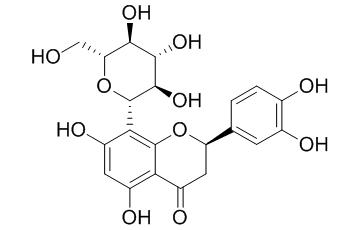Providing storage is as stated on the product vial and the vial is kept tightly sealed, the product can be stored for up to
24 months(2-8C).
Wherever possible, you should prepare and use solutions on the same day. However, if you need to make up stock solutions in advance, we recommend that you store the solution as aliquots in tightly sealed vials at -20C. Generally, these will be useable for up to two weeks. Before use, and prior to opening the vial we recommend that you allow your product to equilibrate to room temperature for at least 1 hour.
Need more advice on solubility, usage and handling? Please email to: service@chemfaces.com
The packaging of the product may have turned upside down during transportation, resulting in the natural compounds adhering to the neck or cap of the vial. take the vial out of its packaging and gently shake to let the compounds fall to the bottom of the vial. for liquid products, centrifuge at 200-500 RPM to gather the liquid at the bottom of the vial. try to avoid loss or contamination during handling.
Nat Prod Commun. 2015 Jul;10(7):1191-3.
Chemical Constituents of Pyrrosia calvata.[Pubmed:
26411008]
METHODS AND RESULTS:
A novel flavanone glycoside, 3',5',5,7-tetrahydroxy-6-C-β-D-glucopyranosyl-flavanone (1), along with 16 known compounds, (R/S)-eriodictyol-8-C-β-D-glucopyranoside ((R)-Eriodictyol-8-C-beta-D-glucopyranoside,2), quercetin-3-O-α-L-rhamnosyl (1''' --> 3''')-β-D-glucopyranoside (3), hemipholin (4), 4β-carboxymethyl-(-)-epicatechin methyl ester (5), kaempferol (6), quercetin (7), mangiferin (8), chlorogenic acid (9), 1,5-O-dicaffeoylquinic acid (10), 3,5-O-dicaffeoylquinic acid (11), 3-O-caffeoylquinic acid methyl ester (12), 1-O-caffeoyl glycoside (13), 4-O-β-D-glucopyranosyl-caffeic acid (14), 3'-O-methyleplcatechin-7-O-β-D-glucopyranoside (15), hop-22(29)-en-30-ol (16) and diploptene (17), were isolated from the whole plant of Pyrrosia calvata (Backer) Ching.
CONCLUSIONS:
Among them, compounds 2, 3, 4, 10, 11, 13 and 14 were isolated from the family Polypodiaceae for the first time, and compound 5 has not been recorded previously from the genus Pyrrosia.



